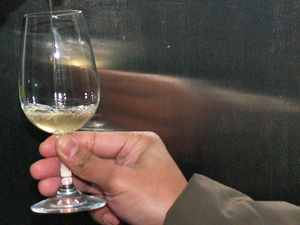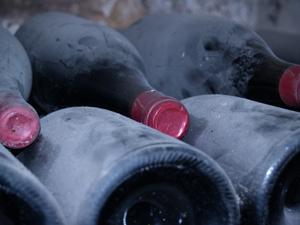Wine defects. How to identify faults when tasting wines
- Categories :
- Wine
- Wine News
- Wine Making
- Enjoying Wine
- Gourmet Odyssey
Wine is a living matter, even once it has been bottled. As with all living things, it evolves, and unfortunately, not always for the better. It's best to remain indulgent and open when tasting wines, but even so there are some defects that are difficult to put to one side because they make the wine unpleasant to drink. Here are a few of the principal faults that you can come across.

Before we get started, we will only be addressing some of the faults that adversely impact tasting wines, and we will not be talking about difference in appreciations of aroma and taste, that remain a very personal affair. The faults we will be examining are the ones that someone without any particular wine knowledge will be able to identify, simply by looking at the glass, smelling, or tasting the wine.
Identifying faults by sight
Some defects don't even need you to smell or taste the wine to spot.
A cloudy wine for example might be a sign of a problem during ageing, or of mould being present in the grapes at harvest time. However, it should also be noted that all cloudy wines are not necessarily bad. Lack of clarity could be due to tartaric crystals or from small particles left in a wine that has been voluntarily left unfiltered.
The fluidity of a wine is also important because a wine that is too heavy when you swill it in a glass could be the sign of a lack of sulphites to protect the wine. But it's difficult to generalise too much because a sweet white wine will cling to the glass much more than a dry white because of the different sugar levels.

A wine can also have some greenish tinges, hinting at a lack of maturity in the grapes at harvest time, or the presence of vegetal matter such as leaves or stems. The green tinge in a white wine is more visible in young wines, and becomes less evident as the wine becomes more yellow with age. However the chances are that the grassy taste will remain!
In still wines, a fault that is easy to spot is the presence of bubbles which don't disappear after the wine has been swilled around the glass or left to air for a few minutes. It could mean that the wine has started an unwanted second fermentation after being bottled, and most often occurs if we reduce the level of sulphur dioxide when bottling.
Identifying faults by smell
So apart from the bubbles example, before giving a definitive judgement on the state of the wine, you need to go further. The next step is to smell the wine to confirm your initial observation or to check for other discrepancies.
The easiest smell to identify is that of a corked wine. It?s normally due to a poor quality of cork that contaminates the whole bottle of wine. You can normally tell just by smelling the part of the cork that was in contact with the wine in the bottle. Instead of smelling of the wine, it has a strong smell of cork. This smell can also result from an error in handling the wine during the bottling process, when the bottles are laid down too soon after the cork has been inserted. But the odour alone is enough to spoil the pleasure in tasting the wine.
For the more accomplished wine tasters, the smell of an oxidised wine can cause problems, but make note that it is completely normal for some wines such as port or Jura wines. The wine presents a maderised odour of very ripe fruit or even chard. If it is just slightly oxidised then sometimes after opening it will regain some of its freshness, but if some of the wine has also evaporated, then there's nothing to be done. A wine that has maderised has either passed its optimum age, or has been stored in poor conditions, causing the wine to come into contact with the air, and resulting in an irreversible bitterness.

The opposite fault occurs when you can detect that a wine has reduced. You'll notice an odour of rotten eggs, mould, mushrooms, sweat, or even leather. Generally, these smells dissipate once the wine has been opened for a while. They often come from the sulphur in the bottle or form if the wine is exposed to too much sun light.
You might also notice other unpleasant aromas such as vinegar, due to the wine being in contact with too much air, or a smell of the lees, if a wine was left in contact too long with the lees during fermentation. Other smells hint at a lack of maturity in the grapes at harvest time, such as cat?s wee for Sauvignon or green pepper for the Cabernets.
Identifying faults by tasting
The principal faults detected by the nose are often also found on the palate. But there are also others that can only be noticed once the wine has finally been tasted.
Bitterness is on example, which results from their being too much vegetal matter in the must during fermentation, or a rotten taste if the harvested grapes contained too much mould and weren't sorted with enough care.
Some bad tastes herald from the containers in which the wine was aged, for example if the wood in a barrel contained bacteria or was not cleaned properly.
However, just to end on a more re-assuring note, even if we have listed quite a few faults, fortunately we don't come across them very often, and the vast majority of wines tasted will be in perfect health. But it's always useful to be able to spot some of these faults to better understand whether there is something technically wrong with the wine, or if it's just one that we don't like.
Other articles relating to wine tasting




